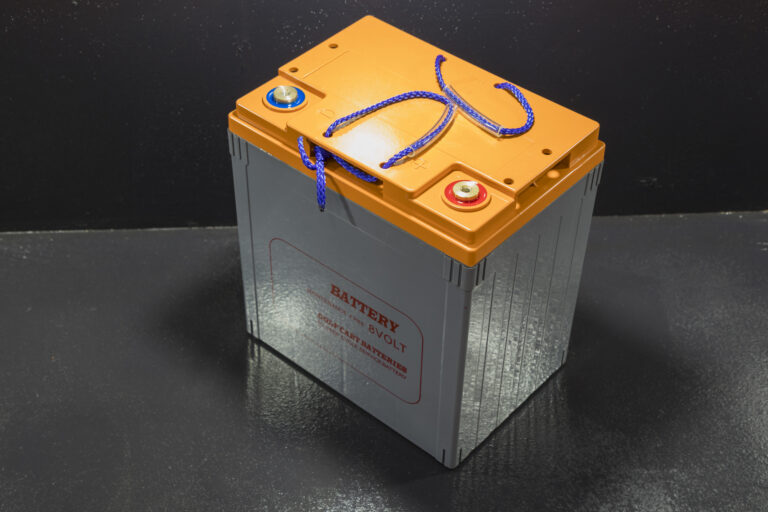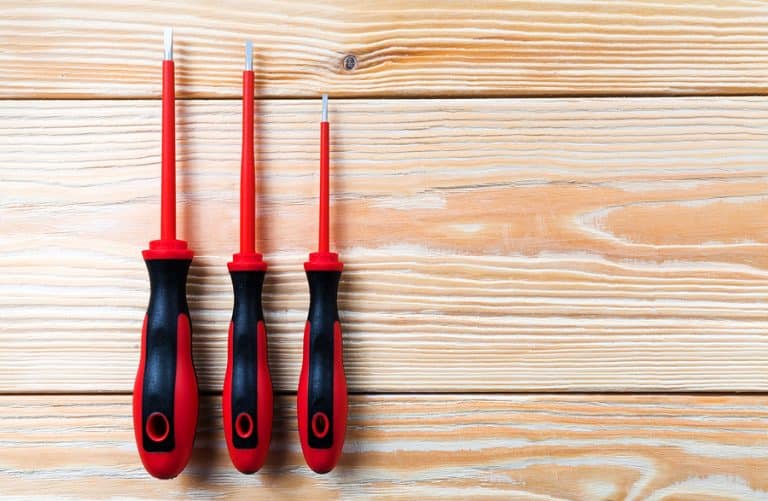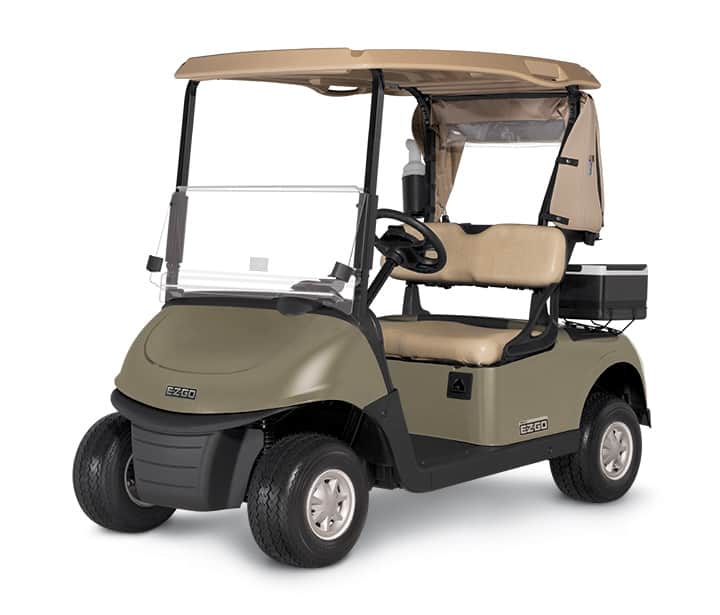Easy Way to Know If Golf Cart Shocks Are Bad (Fully Explained)
Golf cart springs, struts, and shock absorbers ensure your ride on the golf course is as smooth as possible. Shocks absorb the impacts of spring bouncing and don’t dissipate energy.
The easiest way to tell lousy golf cart shocks is by leaking oil or other signs of damage. Look out for peeling, cracking, or off-center rubber shock covers at either end of the surprises. Shock absorbers use gas or oil to soak in the spring’s excess energy.
Physical damage means the absorbent liquid or gas is escaping, making the shocks ineffective.
Please make yourself comfortable as we dig deeper into knowing if golf cart shocks are bad, especially the ones you own.

How Do You Know If your Golf Cart Shocks are bad and Need Replacement?
Nose-diving
A golf cart with the front part diving into the ground and the rear end lifting more than usual asks for new shocks. It may also prove hard to drive the cart into reverse.
If left unattended, nose-diving creates several other problems, including wheel sagging and rubbing. Changing the shocks as soon as possible prevents these secondary problems.
Sagging Suspension
A sagging suspension, especially in newer golf carts, is a cause for alarm and may point toward worn-out shock absorbers.
The case differs for old golf carts because the suspension system has been broken down by use and age.
When the shock absorber cylinder deflates, the distance between the wheels and the suspension system reduces, causing the wheel wells to grind the tires.
Strange or Funny Noises
If the cart produces funny noises accompanied by a leak in the rear bumper and squeaking in the front, it’s time to get your golf cart new shocks.
Leaking deflates the cylinder, making absorbing excess energy from the shocks useless.
Having a keen, sharp hearing ability and regularly inspecting the shock absorbers should alert you when they are worn out.
Body Roll
Bad shocks can negatively affect vehicle handling and lead to accidents when not replaced soon enough.
The problem might be worn-out shocks when the vehicle leans too heavily when taking corners or curves.
It is time for shock replacement if you feel the entire golf cart roll over when driving too fast or taking a sharp corner. But why wait that long?
Swerving
Did you know lousy golf shocks can negatively affect steering?
This indicator is much scarier than the rest because the golf cart’s steering does the exact opposite of what you wanted it to do.
Defective shock absorbers can cause the vehicle to turn in the opposite direction when you apply brakes to take a corner.
It feels like the body roll discussed above, but much worse.
Trying to compensate doesn’t work; you may fishtail or drive across the road.
Bad Braking
Whenever you’re trying to slow down the golf cart, but the process is taking longer than usual, check the condition of the shock absorbers.
It may sound absurd, but worn-out shocks and struts can negatively interfere with braking.
The only problem is that most people cannot associate them with braking and check elsewhere.
A longer slowdown time could be connected to the shock absorbers. They interfere with the piston rod length, making picking slower than usual. The vehicle takes more distance and more time to stop.
Tire Wear
Golf cart components are often more interconnected than you think, and a problem on one associate sends a ripple effect to the other. Surprisingly, unusual tire wear is not only an indicator of lousy driving but also of bad shocks.
Uneven tire wear should tell you to inspect the shock absorbers and replace worn ones. The reason is simple. A bad suspension makes the tire grind the road on and off unevenly.
The result is the golf cart bounces the tires on the road more times than other vehicles.
If your golf cart tires are balding in some areas more than others, it’s time you get new tires from a certified dealer.

of Callaway ERC Triple
Track Golf Balls for
yourself or your buddy!
How Often Do You Replace Shocks on a Golf Cart?
Some golf cart owners wait until the ride becomes too uncomfortable to bear before replacing the shock absorbers.
The damage has been happening by this time and probably affected other vital cart operations. How often should you replace shocks on a golf cart?
There isn’t one single criterion for telling when shock absorbers need replacing.
The manufacturers insist on shock replacement after every few hundred miles. However, this is inaccurate and largely benefits the golf cart manufacturers because, in most cases, the shocks are still intact.
The rule of thumb is to have a professional golf cart mechanic inspect the shock after every few hundred miles. After that, an annual inspection will do. This ensures you only replace when necessary, saving you the money you could have purchased new shocks multiple times.
Wondering how you’ll charge your golf carts? Read here: How to Charge a Golf Cart Battery? (Even If It’s Dead)
Replace your golf cart shock absorbers when you notice something unusual with the suspension system. For example, the ride may be unusually rough.
The cart may lean forward more frequently or have an extended braking distance. In summary, there are no laid-out rules.
If golf cart shocks are bad, what do Shocks Sound Like?
The shocks and the struts make a knocking or clunking sound. Nasty surprises can be irritating to the ear and make the ride uncomfortable.
And you can hear a golf cart driving on nasty shocks from a mile away.
When the cart hits a pothole, bump, or any other rough surface, strut bottoms and shocks hit each other, and irritating noise is produced by metal surfaces hitting against each other.
The noise may also emanate from worn shock accessories such as the mounting components.

and apparel.
gear, accessories and apparel. (affiliate link)
Will Newer Shocks Make My Golf Cart Ride Smooth?
The answer is a resounding YES!
The primary and sole reason manufacturers fit golf carts with shock absorbers is to make the ride smoother than when using springs alone.
You need to replace the defective shocks when the ride becomes too rough when hitting bumps, potholes, or when driving on uneven road surfaces.
New shocks translate to better shock absorption properties, hence a smoother and more comfortable ride.








